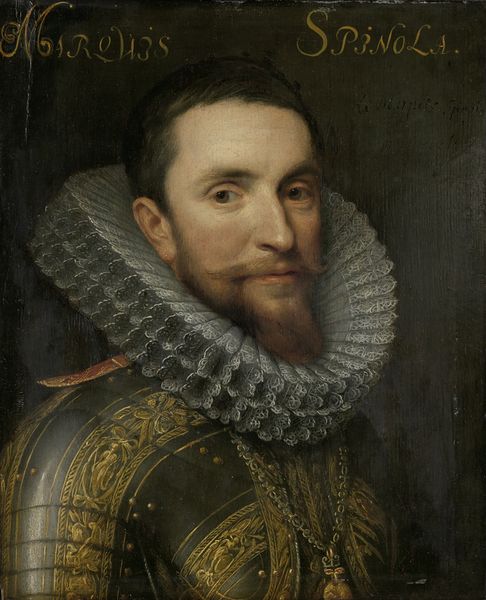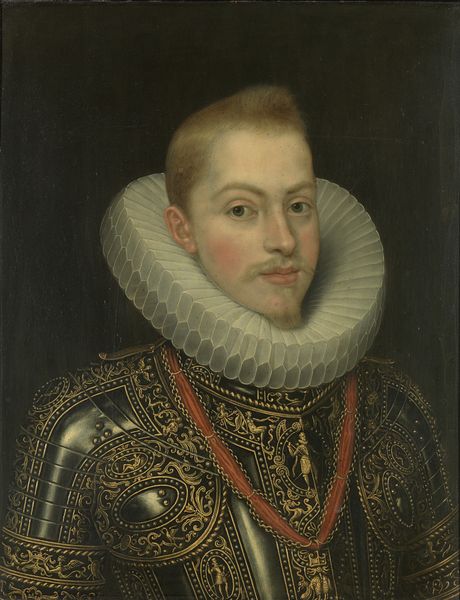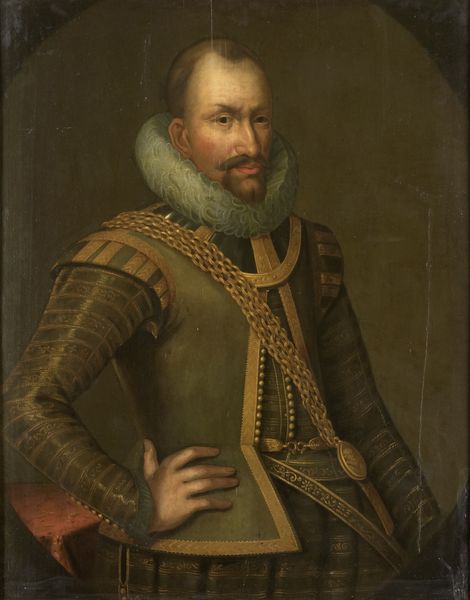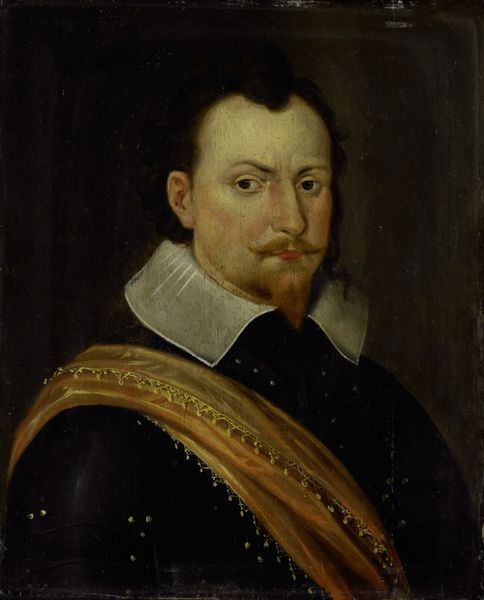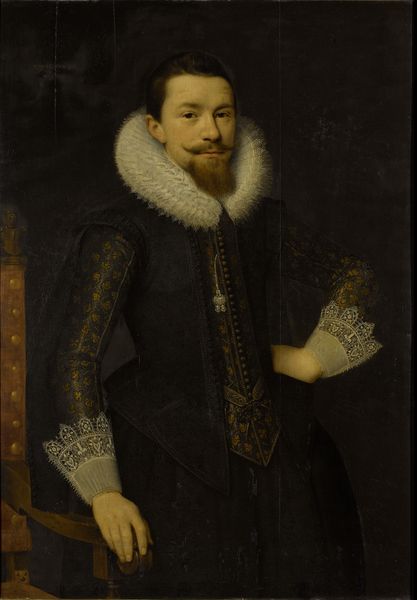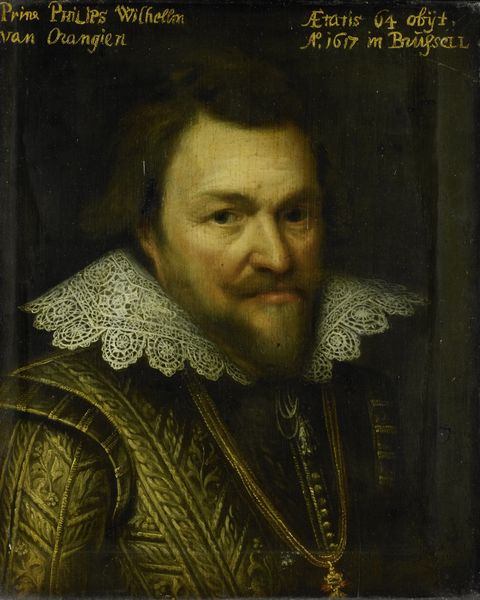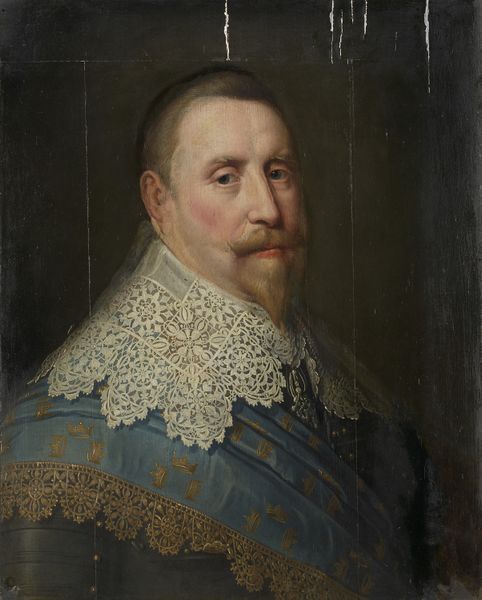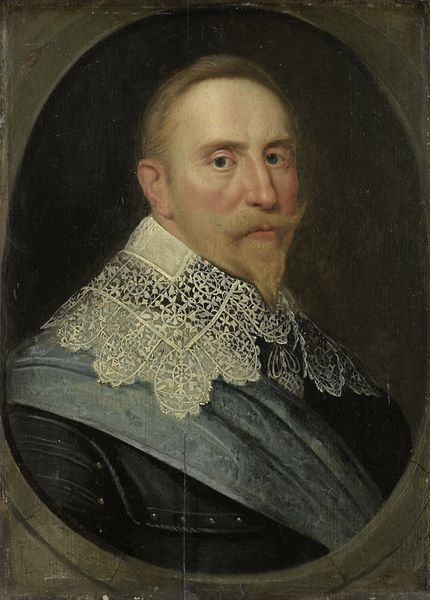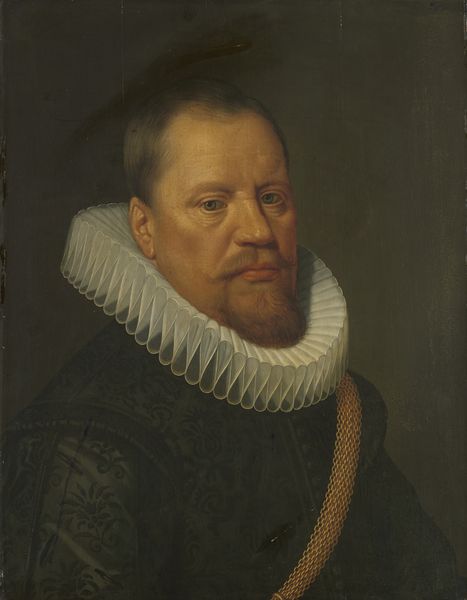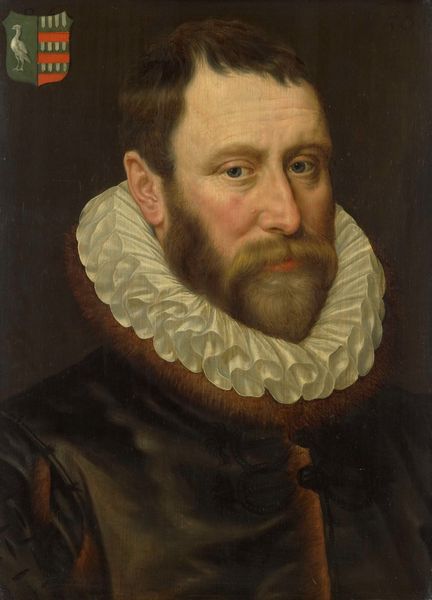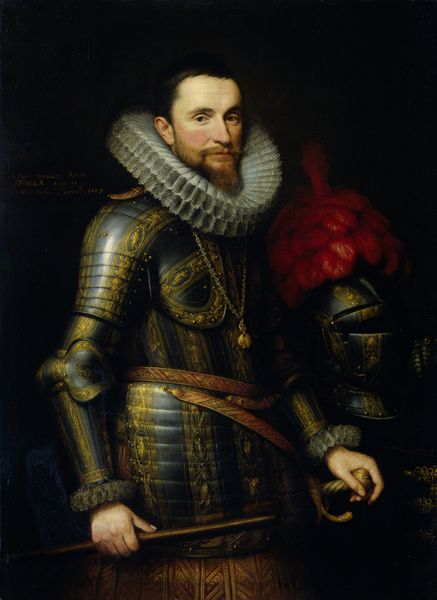
painting, oil-paint
#
portrait
#
baroque
#
painting
#
oil-paint
#
history-painting
#
realism
Dimensions: support height 28.5 cm, support width 22.4 cm, outer size height 45.5 cm, outer size width 39.2 cm, outer size depth 4 cm
Copyright: Rijks Museum: Open Domain
Editor: Here we have "Portrait of Archduke Albert of Austria (1559-1621)", rendered around 1600 by Frans Pourbus the Younger. The detailing of the armour is really quite striking against the otherwise dark backdrop, isn’t it? How do you read a portrait like this one? Curator: The most compelling element for me is indeed that armour. Look at the figures embossed upon it, each a carefully selected emblem, echoing classical virtues and military prowess. Can you identify any of those figures represented? Editor: I think I see some Roman figures, perhaps alluding to Mars? Does the inclusion of these figures make a statement about the Archduke himself? Curator: Precisely! The Archduke is intentionally associating himself with those qualities. The armor is not just protection; it’s a billboard of self-representation, drawing on deeply embedded cultural associations of power, courage, and legitimate rule, all referencing the continuity of classical ideals. And consider the lace collar – the ‘ruff’ – a symbol of wealth and status that frames the face. Editor: It's interesting how even clothing can be such a potent symbol. So, every detail is there to broadcast a carefully constructed image. Curator: Exactly. Think of portraiture then as an early form of image management! The artists embedded coded meanings. What impression do you think people, then and now, took from the portrait? Editor: I guess it conveyed the authority and refined nature expected of someone in his position. Curator: Indeed. Even today, the careful arrangement of these visual symbols speaks volumes about enduring cultural ideals of leadership. I’ll never look at portraits the same way!
Comments
No comments
Be the first to comment and join the conversation on the ultimate creative platform.
